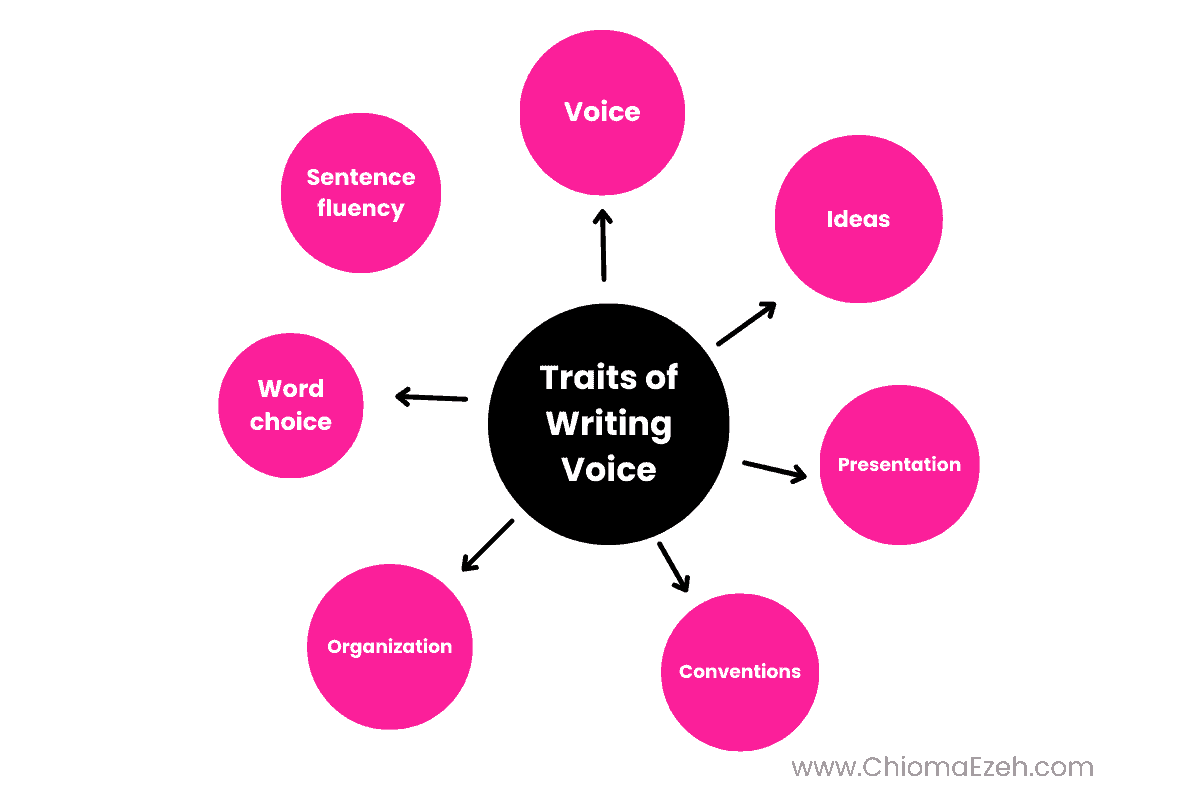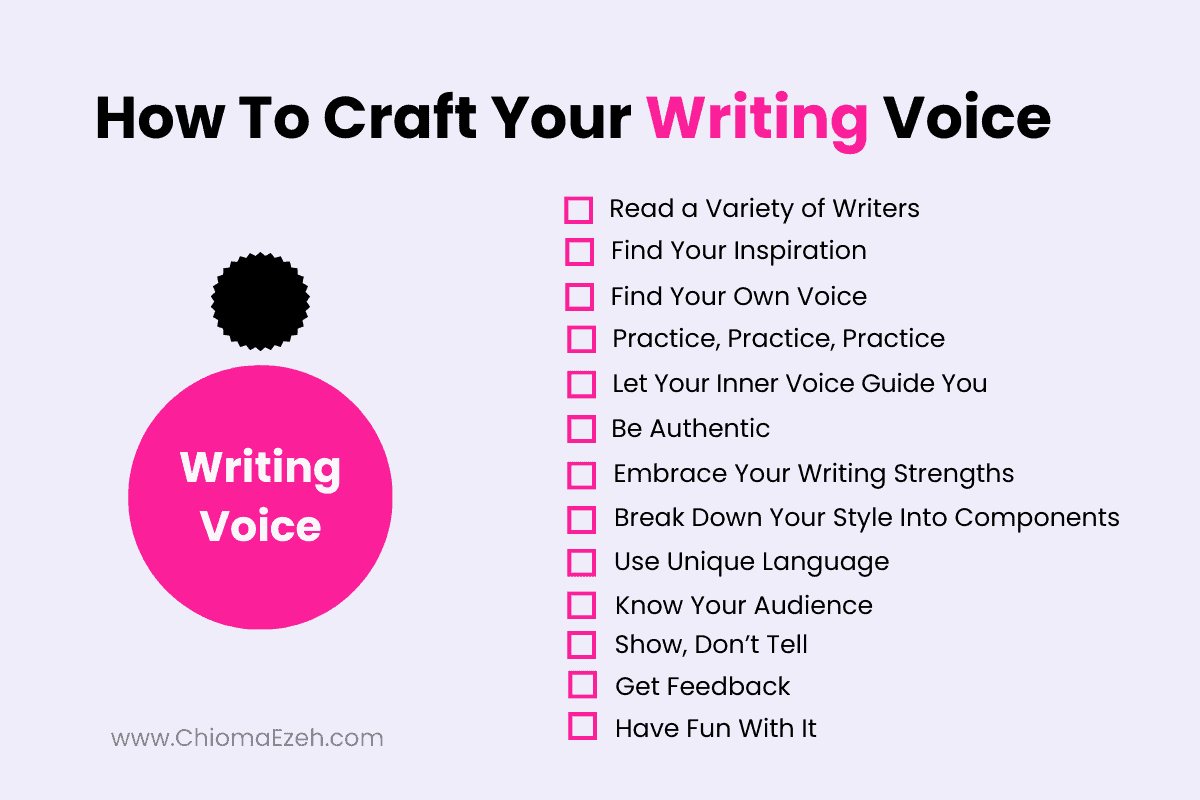How To Find Your Writing Voice (Expert Tips For Signature Style)
Finding your writing voice is vital if you are looking to make your mark in the writing industry. Your unique writing style will help set you apart from other writers and give your readers something special that they won’t find anywhere else.
I’ll be sharing tips on how to find your writing voice by understanding your motivations, staying true to yourself, and exploring different ways of expressing yourself. It doesn’t matter if you’re writing books or articles or even using AI writing assistants, having control over your own unique voice will help make your readers connect with what you have to say in meaningful ways.
So let’s get started 🙂
Let’s Talk
Are you a writer aspiring to pen a masterpiece that never fails to captivate? Look no further. Reach out to us and uncover how we can help you to take your writing to unprecedented heights!

What Is Writing Voice?
What Is Writing Voice?
Writing voice is the distinct style and tone that an author or writer uses to communicate. It is an important element of effective communication, as it helps convey emotion and emphasize certain points or ideas.
Writing voice can be used to convey emotion, mood, or attitude, as well as create a unique identity for the writer. It can refer to the overall tone of a piece, including its attitude, level of formality, choice of words, and sentence structure.
A good writing voice is clear, engaging, and appropriate for the audience. It should be consistent throughout a given piece of writing or speech.
What Is Writing Voice?
Writing voice is the distinct style and tone that an author or writer uses to communicate. It is an important element of effective communication, as it helps convey emotion and emphasize certain points or ideas.
Writing voice can be used to convey emotion, mood, or attitude, as well as create a unique identity for the writer. It can refer to the overall tone of a piece, including its attitude, level of formality, choice of words, and sentence structure.
A good writing voice is clear, engaging, and appropriate for the audience. It should be consistent throughout a given piece of writing or speech.
The 6 Traits Of Writing Voice
Writing voice is what sets your work apart and makes it unique. Finding your writing voice isn’t easy – it takes practice and experimentation to get it just right. But once you do find it, you’ll know because your readers will recognize something special in what you write.
To help you on this journey of discovery, here are six traits of writing voice that can make all the difference when crafting compelling content:
- Ideas: are the actual content that you present in your piece of writing
- Presentation: includes how you organize and convey these ideas.
- Conventions: includes grammar, punctuation, spelling, capitalization, and other mechanics of a piece of writing
- Organization: Organization is how all the above pieces of writing flow together
- Word Choice: is how you chooses to use specific words in order to better convey the intended meaning
- Sentence fluency: is the rhythm and flow of how sentences are formed and connected

How To Find Your Writing Voice [+ Examples]
There are several different steps to finding your writing voice. Creating your own signature style will depend largely on your individual writing goals and the kind of audience you are trying to communicate with, especially.
However, there are certain basic steps that can be used to develop your personal writing voice.

Below are the best tips I have personally used and others have found great success with. But before I proceed, a few disclaimers.
Some of these tips have worked perfectly well for me and for a lot of my students. However, writing, as with anything else, doesn’t come with enough hard and fast rules. The goal is to use these as guidelines and develop your OWN writing voice.
That does not mean you cannot follow these steps as is, but feel free to tweak and test. However, if you find it more convenient to go with just this, as is, by all means, knock yourself out. There are also other elements such as grammar, passive and active voice, and punctuation that is as important but not covered in this guide.., so I didn’t include those to keep this topic more streamlined and straight to the point.
I’m only trying to keep the focus on the style of voice plus two or more additional tips.
So, I hope you get the point.
Well, that said, let’s get to the steps:
1. Read a Variety of Writers.
To find your own writing voice, start by reading books, magazines, newspapers, and websites of different authors. Doing this will make you get an idea of the range of writing styles out there.
Take note of what resonates with you and why it does so. Why does it resonate with you? Could it be the way the words flow? Maybe experience infused in it? The humor or the sarcasm?
Once you identify the specific elements that resonate with you, it’s time to jot them down. For example, if you love the way an author uses humor to tell a story, make a note of it so that you can use it as inspiration in your own work.
Or you can use anecdotes as the author does.
Writing Voice Example:
For example, I love this piece from Stephen King.
“The most important things are the hardest to say. They are the things you get ashamed of, because words diminish them — words shrink things that seemed limitless when they were in your head to no more than living size when they’re brought out”.
Stephen King
I love that quote because it has the following elements in its writing voice:
- A sense of intimacy: King speaks directly to the reader, using words that feel like a personal conversation.
- Emotional depth: This quote goes beyond surface-level emotions and speaks to deeper feelings and understanding.
- Profoundness: The quote has an air of wisdom and insight that really resonates with me.
Writing Voice Activities:
Find out the specific key elements in that writer’s style that pique your interest or resonate with you. These elements can range from:
- humor
- sarcasm
- dialogue
- sentence structure
- word choice – plain language vs. poetic language
- tone (serious, playful, conversational, etc.)
- rhetorical devices.
- imagery or sensory elements
- descriptive language
- storytelling
2. Find Your Inspiration.
Aside from finding inspiration from other authors and writers, you can also find inspiration in other creative outlets.

Listen to music, watch movies and shows, boost your inspiration with subscription boxes, take walks outside, and observe people interacting with each other—all these activities can spark ideas and help you find the words and stories you want to share.
Writing Voice Activities:
Set aside time to be inspired by other art forms — movies, music, theatre, etc. and take the time to really observe and appreciate how different people express themselves.
Make a list of any elements that stand out to you and use them to create something new. I wrote about the idea of friendship after watching a film about three teenage girls going through some major changes in their lives. I was inspired by the characters’ resilience and the strength they found in each other during tough times.
My Writing Voice Example:
In my own words:
Friendship is a powerful thing. It can lift us up when we feel low, show us a different perspective, and remind us that no matter what we are going through, we are never alone. True friendship is like a lighthouse in the stormy sea—it stands tall and strong despite the raging waves around it. It can help us find our way back to shore when all else fails. The connections we make with each other give us strength and hope for a better future. That’s the kind of friendship that I aspire to have and make with others.
If you notice, this writing has some descriptive elements sprinkled into it. For example, the phrase “like a lighthouse in the stormy sea” and “strong despite the raging waves around it“. I really like to use vivid descriptions in my writing voice.
I love using movies to find creative inspiration and bring new ideas into my writing. It allows me to explore different art forms and appreciate how others express themselves too.
Your Worksheet:
- What creative outlets inspire you?
- How can you use these outlets to find inspiration for your writing voice?
- Do you find it easier to come up with ideas or topics for your writing after a day’s out? If so, what specific events have been helpful?
- What other exercises have you done to help cultivate your creativity?
- How do you stay motivated when writing becomes difficult or tedious?
- Do you use movies and events to create meaningful connections in your life?
3. Find Your Own Voice.
Once you’ve identified the elements from other authors that resonate with you, it’s time to create your own voice. This means exploring how you want to communicate your ideas in a way that feels true to who you REALLY are. Make sure not to focus too much on imitating others, but to craft your own style that feels authentic and genuine.
Consider the following questions:
- What emotions do I want to evoke in readers?
- How can I use my writing to communicate who I am and what I care about?
- What type of language and tone feels natural to me?
- What types of stories or anecdotes will be most effective at conveying the message I want to share?
Once you can accurately answer these questions, you’ll notice it becomes easier to get into a flow when writing and to create something that feels true to you.
In fact, it helps to focus more on a specific part – like for me, I focus a lot on “what I care about” and “past experiences” that I can touch upon to better convey my message. Because what I have learned from experience, is that, it’s so much easier to write about what you’ve experienced – literally, things you have seen, felt, touched, spoken about and what have you.
Turn those little moments into stories and anecdotes.
Perhaps that moment at the grocery store or at the garage, the argument you had with a friend, or how you felt when you saw a special someone – they all lend themselves to writing and can be used as the foundation of your signature style.
Writing Voice Exercises:
Start by looking at your past experiences and ask yourself, how can I use this in my writing? It could be anything from a conversation you had, to a moment of reflection in your life that has created an impact on you.
See if there is any emotion or lesson attached to it and use it as the base of your piece. Once you have some material, get into the flow and write with enthusiasm. Channel what makes writing exciting for you and use it to craft something that is truly yours.
For example, I wrote about my experience of being away from home for the first time when I was in college. It was a vulnerable experience, but it made me realize how important connections are in our lives, and how powerful memories can be. That was my inspiration and that’s what I wrote about.
My Writing Voice Example:
In my own words:
Moving away from home for the first time was an eye-opening experience. Away from my family and friends, I felt both lost and liberated. The loneliness of being in a strange environment was tempered by the excitement of making new connections and learning about different cultures. As weeks turned into months, I started to appreciate all the small memories that were created in this new place. Every cafe, corner store and street had its own unique story. These memories, both big and small, became part of my personal journey and reminded me of the importance of connection in our lives.
The exercise helped me to craft a narrative that was true to me, my experiences, and my voice. Through writing about my experience, I was able to accurately capture the emotions and lessons that were attached to it.
4. Practice, Practice, Practice.
Now that you’ve found some inspiration and have crafted your own voice, it’s time to put what you learned into practice.
Writing is like a muscle — the more you do it, the stronger it will become. Set aside time every day to practice writing and explore different topics that allow you to experiment with your voice.
Start by collecting bits of inspiration from other authors or from your everyday experiences. Then, use this as a foundation for your own work and start putting words on paper/the screen with enthusiasm. Over time, you’ll see that your writing starts to come more naturally and that it begins to take shape.
Writing Voice Activities:
- Choose one topic or experience, and write about it from different angles.
- How would you describe this moment if you were writing a story?
- What emotions are evoked when thinking of the event? Sadness? Anger? Excitement?
- Keep a journal or blog where you can write on a regular basis in order to refine your style.
Once you have written down your thoughts, take some time to reflect on the piece and ask yourself what could be improved.
What type of language was used? Was it effective in conveying the message that you wanted to share? How does this piece fit into your overall writing style and voice? These questions will help you gain a better understanding of how to optimize your writing.
5. Let Your Inner Voice Guide You.
Every writer has a unique voice and perspective, and yours is no different. When you write, let your inner voice be your guide and let it come out in the words you choose, the way you craft a sentence, and the topics you write about.
Your inner voice should be true to your own thoughts and feelings.
Writing Voice Activities:
- Find out what makes your voice unique by writing about a topic or experience that no one else can write about.
- For example, think about your last vacation and try to recreate the experience in words. Don’t worry about whether it’s good or bad, just let your inner voice be your guide and get creative with the words you use.
My Writing Voice Example:
For example, my own voice writes:
“My last vacation was a trip to the Bahamas, an island paradise that was nothing short of spectacular. I spent my days lounging on white sand beaches, snorkeling in crystal clear waters, and eating fresh seafood every night. But it wasn’t just the scenery and activities that made this vacation unforgettable; it was also the sound of distant laughter, the feel of a warm breeze on my skin, and the joy of exploring a new place with old friends. I’ll never forget this magical place.”
Your Worksheet:
Think of three topics that you’re passionate about. Then, write a few sentences on each topic to explore your writing voice. Try different approaches like using humor, metaphors, or even poetry to get an idea of what kind of style comes naturally to you when you write.
6. Be Authentic.
When it comes to developing your own writing voice, authenticity is key. Don’t try to imitate someone else’s style or writing techniques; instead, focus on staying true to your own thought process and experiences.
Use the topics that you are familiar with and draw from real-life examples. Think about how you would explain something to a friend or family member and use this as your starting point.
Exercises:
- Take a few moments to brainstorm about the topics you are most passionate about.
- What are some events or experiences that have shaped who you are today?
- Maybe it’s a trip abroad, a job promotion, or even an embarrassing moment — write down all the ideas that come to mind and then choose one to write about.
- Once you have a topic, let your authentic voice come out in the words you choose and the story you tell.
Writing Voice Activities:
Choose one of the topics from the brainstorming exercise and start writing. Try to be as detailed as possible; think about events that are related to your topic or add a personal touch to make it unique.
Keep in mind that you don’t have to write a masterpiece — just write what comes naturally and let your authentic voice come through on the page.
My Writing Voice Example:
For example, I wrote about my experience of getting my first job:
“Getting my first job was both exciting and terrifying at the same time. I was anxious about the interview process and whether I could really do this job, but at the same time, I felt a sense of pride in being able to take care of myself. As it turns out, I did get the job and it changed my life forever — not only did I gain financial independence but also an incredible amount of confidence in my abilities. To this day, I am thankful for getting that first job and all the lessons it taught me.”
Your Worksheet:
Now it’s your turn 🙂 Choose one of the topics you brainstormed and write a few sentences about it. Be honest and authentic — let your unique voice come out in the words you choose and the story you tell.
7. Embrace Your Writing Strengths.
As you become more familiar with your voice and learn to write more confidently, be sure to embrace your writing strengths rather than focusing on what you think are weaknesses.
If you’re naturally funny, use humor to make your writing more engaging and entertaining. If you enjoy details, add vivid descriptions to make your stories come alive.
Above all else, have fun with it 🙂
Writing Voice Activities:
Think of a few topics that you’re confident in writing about. This could be anything from your favorite hobby to a career you’re passionate about.
Then, make a list of the writing techniques that come most naturally to you when discussing these topics — do you use humor? Metaphors? Poetry?
Once you have this list, write a few sentences on each topic using the techniques that best showcase your writing talents.
Don’t be afraid to experiment — use your strengths to create something unique and engaging.
Exercises:
Choose one of the topics you came up with and start writing. Focus on using your chosen writing techniques to create something unique and entertaining. Whether it’s a funny anecdote or a heartfelt story, let your writing talent shine through in the words you choose.
My Writing Voice Example:
For example, I wrote about my favorite hobby (baking):
“Baking is a therapeutic escape for me. From the smell of fresh-baked cookies to the feel of dough in my hands, it’s one of those activities that brings me endless joy and comfort. And while I’m admittedly far from a master baker, I do like to experiment and try out different recipes. That’s the fun of it — no matter how much I mess up, it’s still an adventure!”
Your Worksheet:
Now, your turn! Choose one of the topics you brainstormed and have some fun with it. Use the writing techniques you identified to craft a piece that is both unique and entertaining.
Try to let your authentic voice come out in the words you choose and have fun while at it 🙂
8. Break Down Your Style Into Components.
To create your own signature writing voice, break down the components of how you write into different categories.
It could include structure, word choice, sentence length and composition, tone, punctuation, and elements like humor tone. If you have no idea where to start, you can use grammar tools for this. Once you have an idea of the components that make up your writing, it becomes easier to hone in on what makes your writing distinct.
Writing Voice Activities:
Make a list of the elements that make up your writing style. Think about how you structure your sentences, choose words, and create an overall tone for your piece.
Do you like to add idiomatic expressions, or focus more on clear, plain language? Take some time to think about this and jot down your ideas in the worksheet.
I’ll go first by sharing my own writing elements.
My Writing Voice Example:
My Writing Elements:
- Structure: I usually like to start with an introduction and build up to the main point of my piece.
- Word Choice: I prefer using descriptive language to create vivid images in readers’ minds, and that’s because I feel imagery connects better than mere words.
- Sentence Length & Composition: I like to write in short, concise sentences that quickly get to the point.
- Tone: My writing style is usually quite conversational and informal.
- Punctuation: I use a lot of commas for emphasis, and even parenthesis for additional ideas, but I also sprinkle in hyphens as needed. I often don’t like using exclamation marks as I think it comes off as being overly aggressive (well, except on rare, relevant occasions)
- Humor/Poetry: Depending on the topic, I like to add a bit of humor or poetic language.
Your Worksheet:
Now it’s time to hone in on your writing style even further.
Take one of the elements you listed and come up with an example that demonstrates this element in action. For example, if you chose “word choice” as one of your components, you could write a sentence like,
“The sun blazed radiantly in the sky, draping the landscape with its golden rays.”
9. Use Unique Language.
To create a truly unique writing voice, try to use words and phrases that are less common or even ones you’ve made up yourself. Avoid clichés as much as possible, and go for the unexpected instead of predictable language. Also, keep in mind that certain words evoke different emotions, so be mindful of the tone and emotion your writing creates.
Writing Voice Activities:
Think about one of the topics you wrote about earlier or come up with a new one to write about. Then take some time to brainstorm creative words and phrases that capture the topic’s emotion or theme.
Write them down in the worksheet.
My Example Worksheet:
- Topic: Baking
- Creative Words & Phrases:
- Mixture of sweet aromas
- Delicious concoctions
- Fluffy baked goods
- Scrumptious treats
- Whisking together ingredients
- Mouthwatering creations
- Layering of flavors
- Baked artistry
- Delectable desserts.
Using these unique and interesting words, I was able to come up with:
I love baking because of the delicious concoctions it allows me to create. From fluffy baked goods to mouthwatering desserts, I love the layering of flavors and the sweet aromas that fill my kitchen as I whisk together ingredients into something scrumptious. Baking is an art form in itself, allowing me to make delectable creations from scratch with my own hands. It’s truly a wonderful experience.
Now that you have some interesting words and phrases, write a short piece using these words to describe the topic. Let your unique voice come out as you craft the piece, and don’t be afraid to take risks with your language.
10. Know Your Audience.
As you write, keep your target audience in mind so you can tailor your writing to them. Knowing who you’re writing for can help you choose words and topics that will be most relevant and engaging to them.
Think about the age group, interests, values, and more of your readers to guide your writing. Check out the post on How to identify your audience to learn about these and more.
Writing Voice Exercises:
Come up with a potential audience for one of the topics you wrote about earlier. Jot down their characteristics in the worksheet.
My Example Worksheet:
- Topic: Baking
- Potential Audience:
- Age group: Late teens/early 20s
- Interests: Cooking, food, DIY projects
- Values: Creativity, self-expression, exploration of new flavors and recipes
- Knowledge level: Advanced beginner to intermediate.
Using the above, I came up with the piece below:
If you’re looking to get creative in the kitchen, baking is the perfect hobby for you! From experimenting with new flavors and recipes to creating delectable treats from scratch, baking can be an incredibly rewarding and fun experience. It doesn’t matter if you’re a beginner or a more experienced baker, there are so many delicious recipes to explore and ingredients to try out. So don’t be afraid to get creative and let your culinary skills shine! You never know what scrumptious creations you’ll come up with!
Now it’s time to write a piece for this target audience. Think about what language and topics would be most relevant to them and use that to craft your writing.
11. Show, Don’t Tell.
Instead of simply telling a story or describing something with words, show it using imagery and descriptive language. Try to paint a vivid picture for the reader to help them get more out of your writing.
Take Our Writing Style Quiz!
Writing Style Quiz
Writing Voice Activities:
Think about one of the topics you wrote about earlier. Now try to come up with vivid words and phrases that help paint a picture in the reader’s mind. Write them down in the worksheet.
My Example Worksheet:
- Topic: Baking
- Vivid Words & Phrases:
- Sugary delight
- Crispy-edged perfection
- Bubbling, golden-brown crusts
- Melting buttery layers
- Sweet and savory aromas
- Whipping up magic in the kitchen.
And I crafted this:
When I’m baking, I feel like I’m creating a sugary delight in my kitchen. From crispy-edged perfection to golden-brown crusts, my baked goods are always full of flavor and texture. Melting buttery layers and sweet and savory aromas fill the air as I whisk together ingredients to make something magical. Baking is a truly incredible experience that lets me whip up delicious treats from scratch, and I’m always excited to see what scrumptious creations I can come up with.
Your Worksheet:
Now take these words and phrases to write a piece that shows, rather than tells. Put yourself in the reader’s shoes and let your language do the talking.
12. Get Feedback.
After you’ve done some writing, get feedback from others to help you improve. Ask a friend or colleague what they think of your work and let them give you honest feedback on how to make it better. They may be able to point out things that you didn’t notice yourself!
Exercise:
Show someone the piece of writing you just did. Ask them what they think and if they have any suggestions on how to make it better. Take their feedback into account and make any changes necessary.
13. Have Fun With It.
Finally, don’t forget to actually enjoy yourself while you’re writing. Writing can be a great outlet for self-expression and creativity, so don’t forget to have fun with it!
Exercise:
Take a few moments to just sit back and relax. Think about what you wrote earlier and appreciate all the effort that went into creating it. Feel proud of the work you’ve done and enjoy the writing process.
Wrapping Up
Writing can be a difficult task, but hopefully, these exercises and tips have given you the confidence to take on any writing challenge! Remember: practice makes perfect.
So keep writing, get feedback from others, and most importantly—have fun with it 🙂


![6 Powerful Elements Of Dialogue Writing [Tags, Action Beats, Subtext & More]](https://chiomaezeh.com/wp-content/uploads/2023/03/Elements-of-dialogue-writing-768x512.jpg)



![What Is Gore In Horror Writing? [Definition, Examples]](https://chiomaezeh.com/wp-content/uploads/2023/05/what-is-gore-in-horror-1-768x512.jpg)